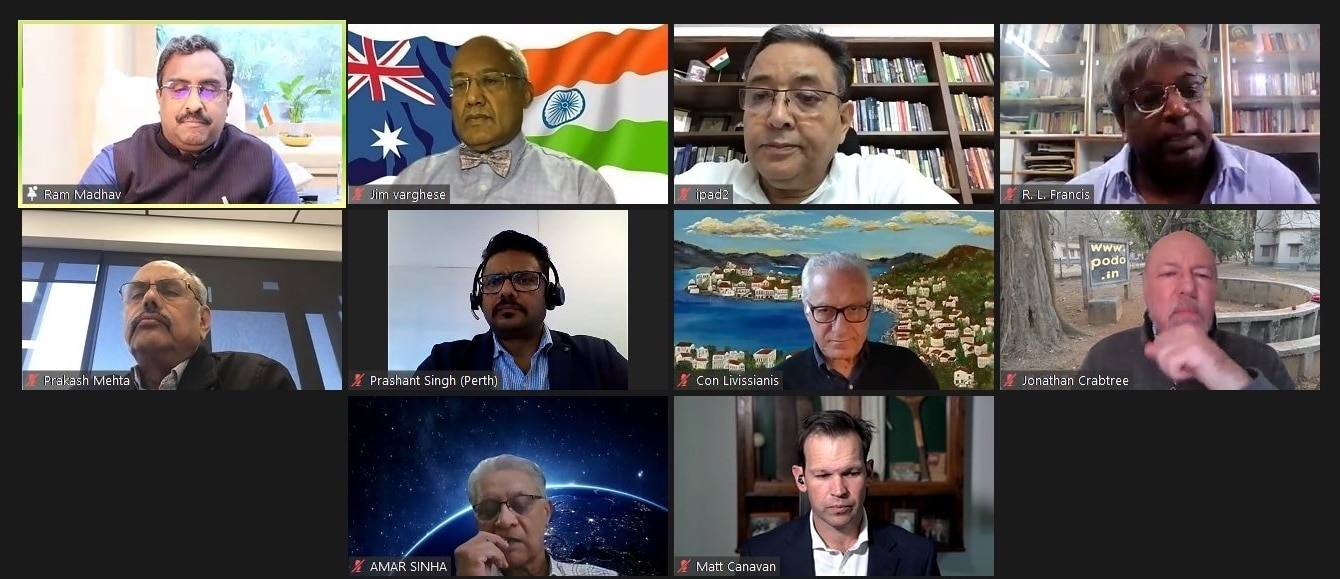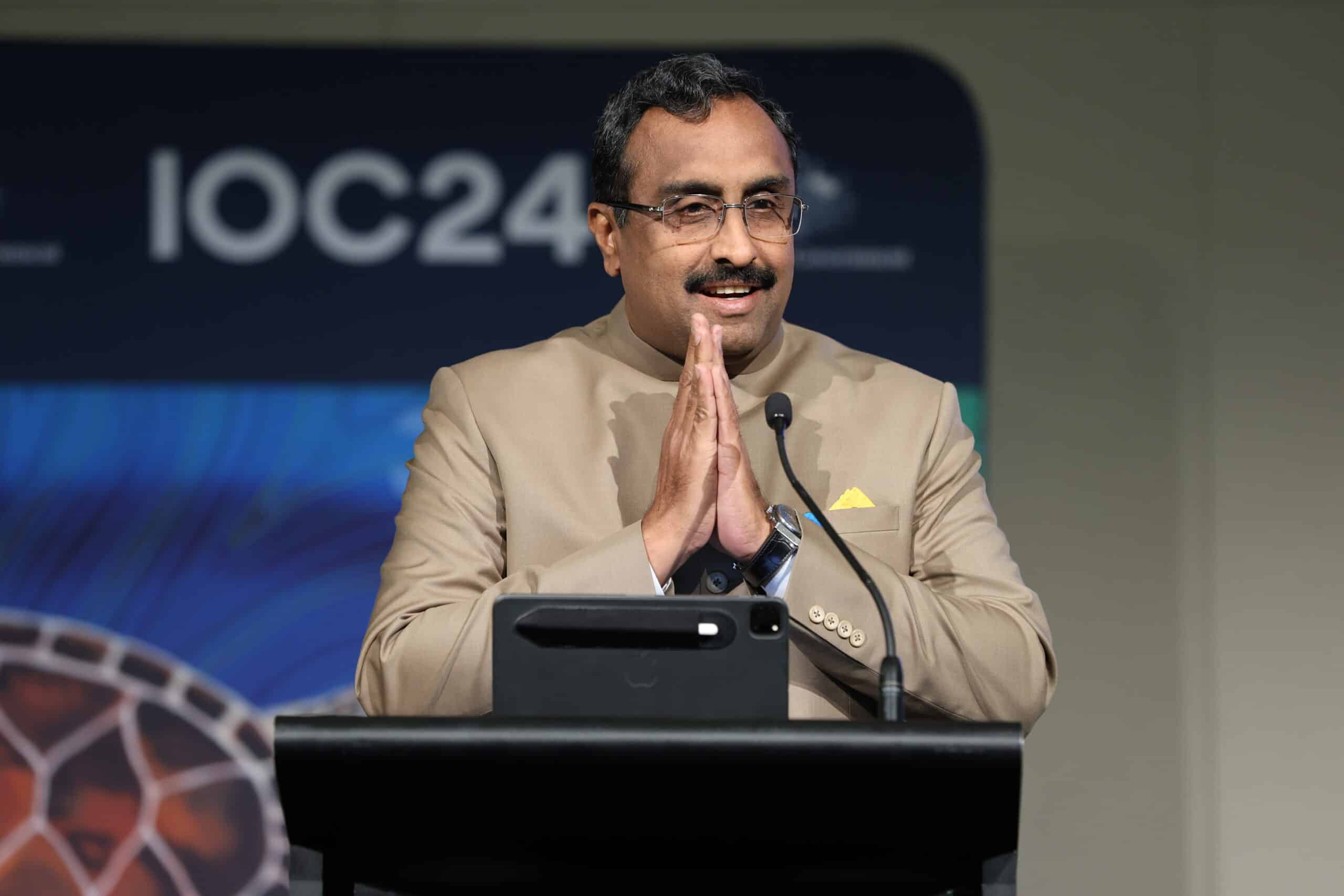
|
Getting your Trinity Audio player ready...
|
Text of Shri Ram Madhav’s Address at a webinar organised by Wired Global Australia and India Foundation on “Quad Economics: Australia and India Perspectives in the COVID Era” on July 21, 2021
Senator Canavan, Amb Vohra, Mr Varghese and colleagues from the India Foundation and Wired Global – Akashika, Alok Bansal, Shristi and others. My namaskars to all…
I am delighted to be a part of this discussion. I wish everybody well in these pandemic times. India and Australia have been friends through centuries. Our shared experience through colonialism, commonwealth and cricket has shaped our bilateral relations since the time of India’s independence in the middle of the last century.
The relationship has certainly scaled new heights in the last few years partly due to the chemistry between the leaders of the two countries – Prime Minister Narendra Modi in India and Prime Ministers from Tony Abbot to Scott Morrison in Australia. The relationship was also influenced by certain significant geo-strategic challenges we both countries are facing in common in the region.
The geo-politics in the Indo-Pacific region, which have hit the global headlines in the recent years, are an important common denominator for our two countries. The rise of Indo-Pacific into the global power axis in the new century has brought big power competition into our neighbourhoods. Future of liberal democracies and rule of law will be tested and contested in the volatile waters of the blue oceans surrounding our two countries.
The Indo-Pacific has witnessed two significant developments in the first two decades of this century. One was the rise of a techno-authoritarian regime of China seeking to expand its sphere of influence deeper into this most happening region. The other is the emergence of an alliance of a quadrilateral of four great nations – the US, Japan, India and Australia – committed to working for building a free, peaceful, inclusive and prosperous Indo-Pacific.
China, with its authoritarian dominance, unaccountable behaviour and arrogant demeanour is causing serious consternation to the nations in the region. Using its financial and technological muscle, it is trying to indulge in Neo-colonisation through maritime silk route initiatives like port building, expansion of naval bases and exploitation of marine resources of the region.
The growing maritime power and influence of China is posing a huge threat to freedom of navigation, rule of law and rights of nations in the region. Moreover, democratic regimes are coming under duress due to its highhandedness while authoritarian regimes in the region have found a new saviour in it.
The emergence of QUAD, in such a gloomy scenario, will naturally be viewed as a response to the rise of China. It is important that the QUAD countries rise up to the challenge to ensure a peaceful future for the Indo-Pacific region. Australia and India, as two important member countries of the QUAD, have a great responsibility in securing that objective.
However, the success of QUAD can be possible only when it is perceived by the other regional powers and groupings as a universally beneficial arrangement. QUAD needs to recognise the centrality of the ASEAN group of nations to the Indo-Pacific region, as insisted by Prime Minister Narendra Modi at the Shangri La address in 2017. Removing the hesitations of the ASEAN countries and reassuring them about their lynchpin status is critical to the success of the QUAD objectives.
The QUAD countries must also respond positively to the aspiration of the ASEAN nations for regional frameworks to take precedence in managing the Indo-Pacific affairs. The East Asia Summit, which brings 27 countries in the world that have stakes in the region together, is one such existing institution. Many more can be created in future.
The Indo-Pacific is going to face challenges to maritime economy, maritime ecology and maritime security. The QUAD has taken initiatives in the initial stages to address the first two challenges – namely, maritime economy and ecology. The cooperation that began with Covid management may well now extend to many other areas of economy including trade, technology, services and people-to-people relations.
India and Australia have a robust and growing bilateral trade to the tune of $25 billion. We have set ambitious targets for it for the future. With its massive consumer demography, skilled youth population, huge technology talent pool and ever-growing needs of basic and advanced infrastructure India offers a huge opportunity for the QUAD countries in general and Australia in particular. Australia, with its vast resources of rare minerals, technology and services sector can be a good attraction for Indian companies to invest.
Over 700,000 expatriate Indians living in Australia, almost 3% of its population, are another robust bond between our two countries.
However, the two countries, as important partners in the QUAD, need to look beyond bilateralism. Australia has its sphere of influence over the South Pacific island nations. It has robust economic ties with several of the ASEAN countries like Indonesia. Its P4I – Partnership for Infrastructure program has taken it closer to countries as far as Vietnam, Cambodia and Laos.
Similarly, India too has its strong multilateral partnerships with countries in the region through arrangements like SAARC and BIMSTEC. India also enjoys strong ties with the ASEAN with a $100 billion bilateral trade. The 17th round of ASEAN – India Summit meeting was held in November last year.
Together with the other two QUAD countries – the US and Japan – India and Australia can converge respective economic spheres of influence in the Indo-Pacific into one large economic region on the lines of the European Union. Pan Indo-Pacific Economic Parliament led by the QUAD regional powers like India, Australia and Japan with active collaboration from the ASEAN nations and participation of all the East Asia Summit stakeholders is an achievable and beneficial objective in the region.
The QUAD countries may continue to address the maritime security challenges through the annual Malabar Exercise and other bilateral initiatives like AUSINDEX, MLSA, strategic dialogues.
However, for achieving larger objectives of the QUAD for peaceful development and rule of law in the region, the QUAD needs to strive for more inclusive approach to maritime economy and ecology. That can only make the QUAD attractive to the region.
Thank you very much.



